
The Savill Garden sits at the edge of Windsor Great Park. The park itself is huge, covering an area of 5,000 acres that incorporates lakes, woodland and farmland. The Savill Garden itself, created in the 1930s to offer a more formal garden area, is on a relatively modest site of around 35 acres but, with a garden for every season, there are many interesting plants crammed into that space.
After writing about several winter gardens this time last year (see previous posts from January and February 2019), I was told I should visit The Savill Garden so I could add it to the list. When I got there, though, I realised that it wasn’t quite the same as the other gardens I’d visited. In those (Cambridge Botanic, Anglesey Abbey and RHS Hyde Hall), the winter garden is a large area that’s separated out from the rest of the garden and planted specifically for the season. The Savill Garden takes a different approach that fits in with its overall design of a series of interlinked areas that are given specific names (and specific, seasonal planting) but are also very much part of the whole.
When you come into the garden from under the rippled roof of The Savill Building you can see the winter garden area straight away: it would be hard to miss the ranks of coloured dogwoods and willows arranged around the stream that links the two ponds, and following the path in that direction takes you through to the winter beds.
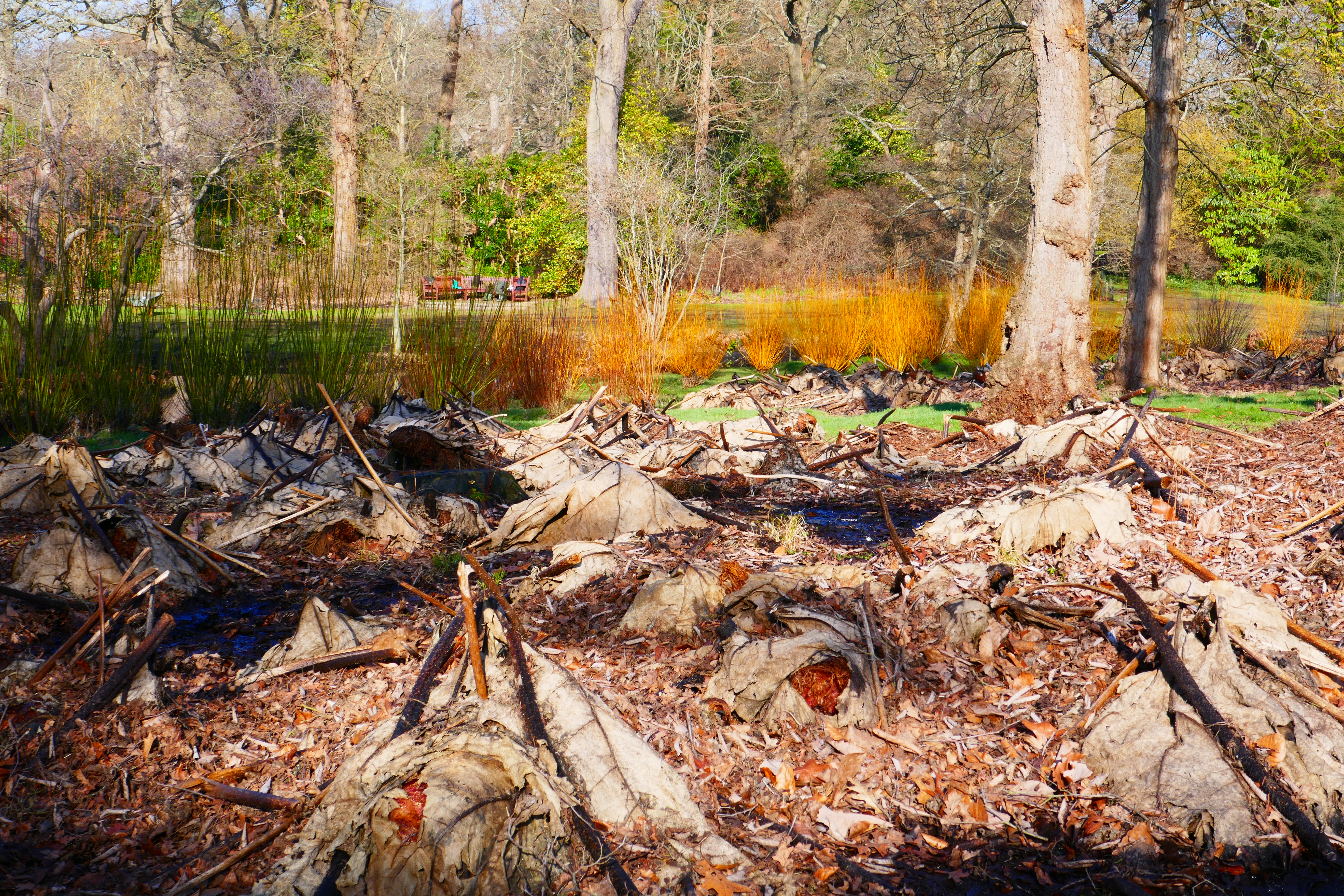
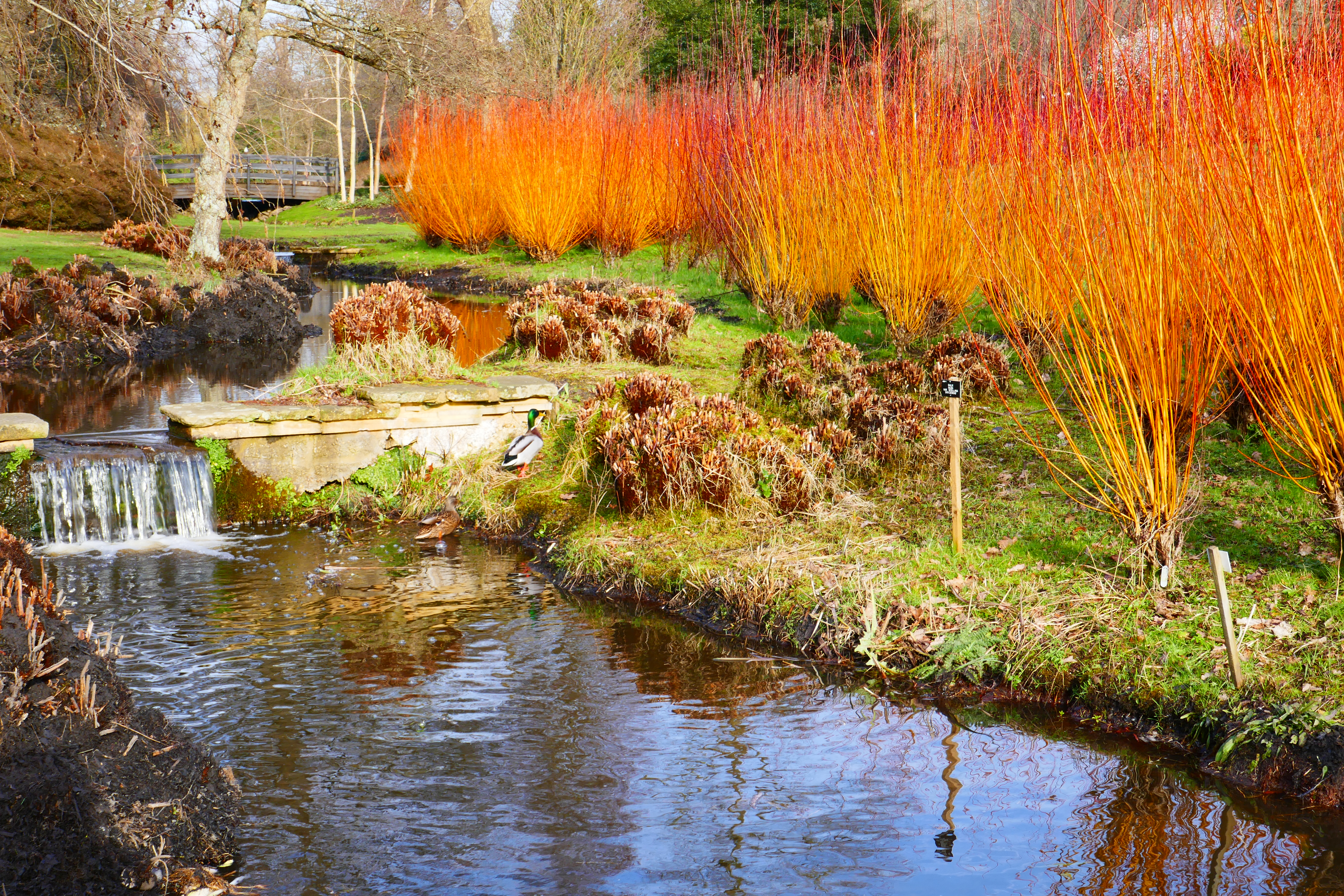
These beds are filled with the usual winter suspects such as rubus stems – the powdery white of Rubus cockburnianus ‘Golden Vale’ and the bristly, scarlet hoops of Rubus phoenicolaseus, more highly coloured dogwoods such as Cornus sanguinea ‘Anny’s Winter Orange’, winter honeysuckle (Lonicera x purpusii ‘Winter Beauty’), soft pink and white stems of Acer tegmentosum ‘Valley Phantom’, one of the biggest and most flower-covered Daphne’s I’ve ever seen (Daphne bholua ‘Jacqueline Postill’) and the stark white trunks of Himalayan birch (Betula utilis var. jacquemontii ‘Silver Shadow’).




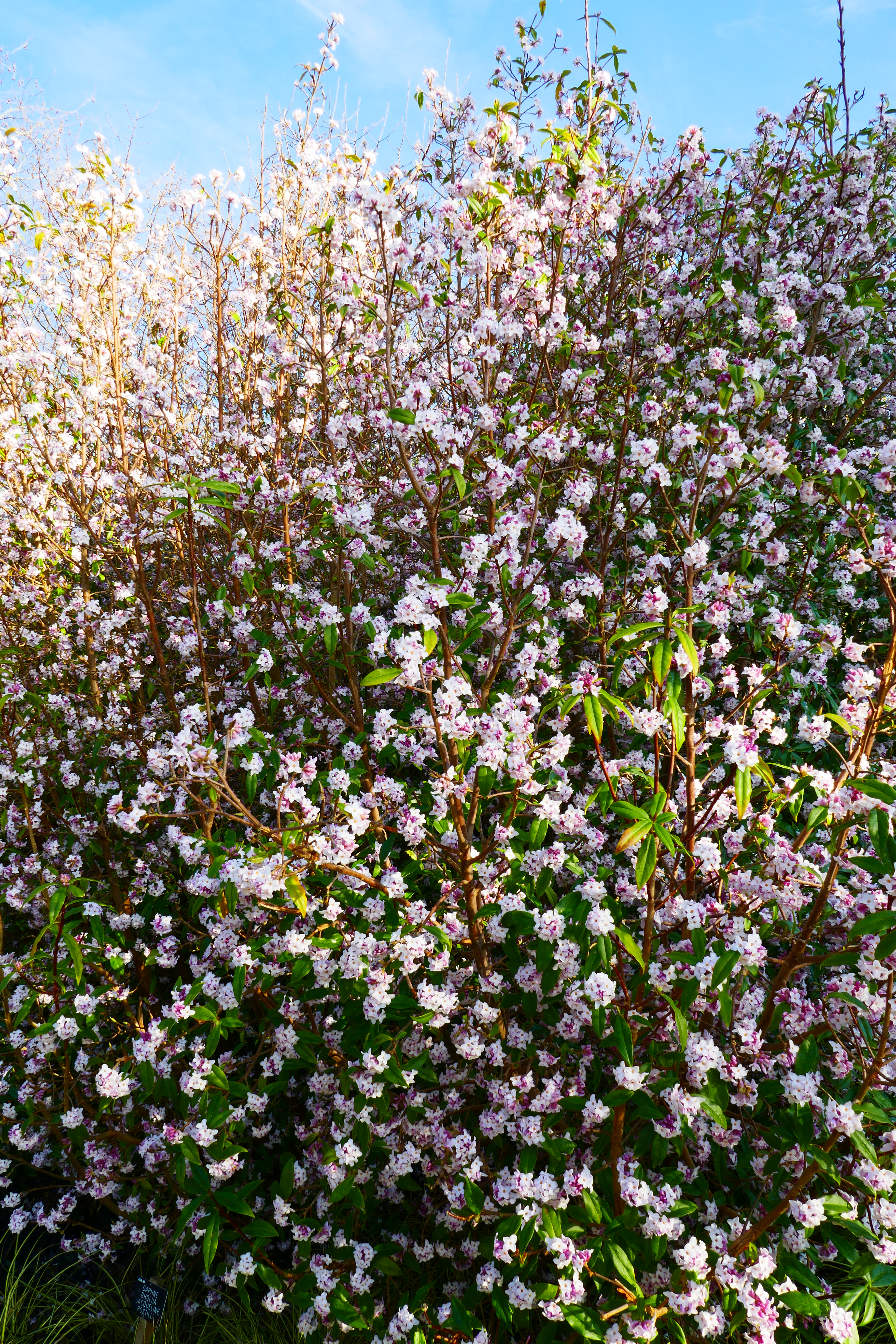

The ground covering plants include hellebores with complimentary flower colours (H. ‘Camelot’ for example), heathers, cream and green variegated euonymus, the ruby coloured leaves of Bergenia ‘Overture’ and B. ‘Eroica’ (beautifully backlit the day I visited), Ophiopogon, both the black (O. planiscapus ‘Nigrescens’) and green (O. japonicus), drifts of carex (Carex oshimensis ‘Everillo’ among others), Acorus gramineus ‘Ogon’, snowdrops and intricately-patterned Iris reticulata.



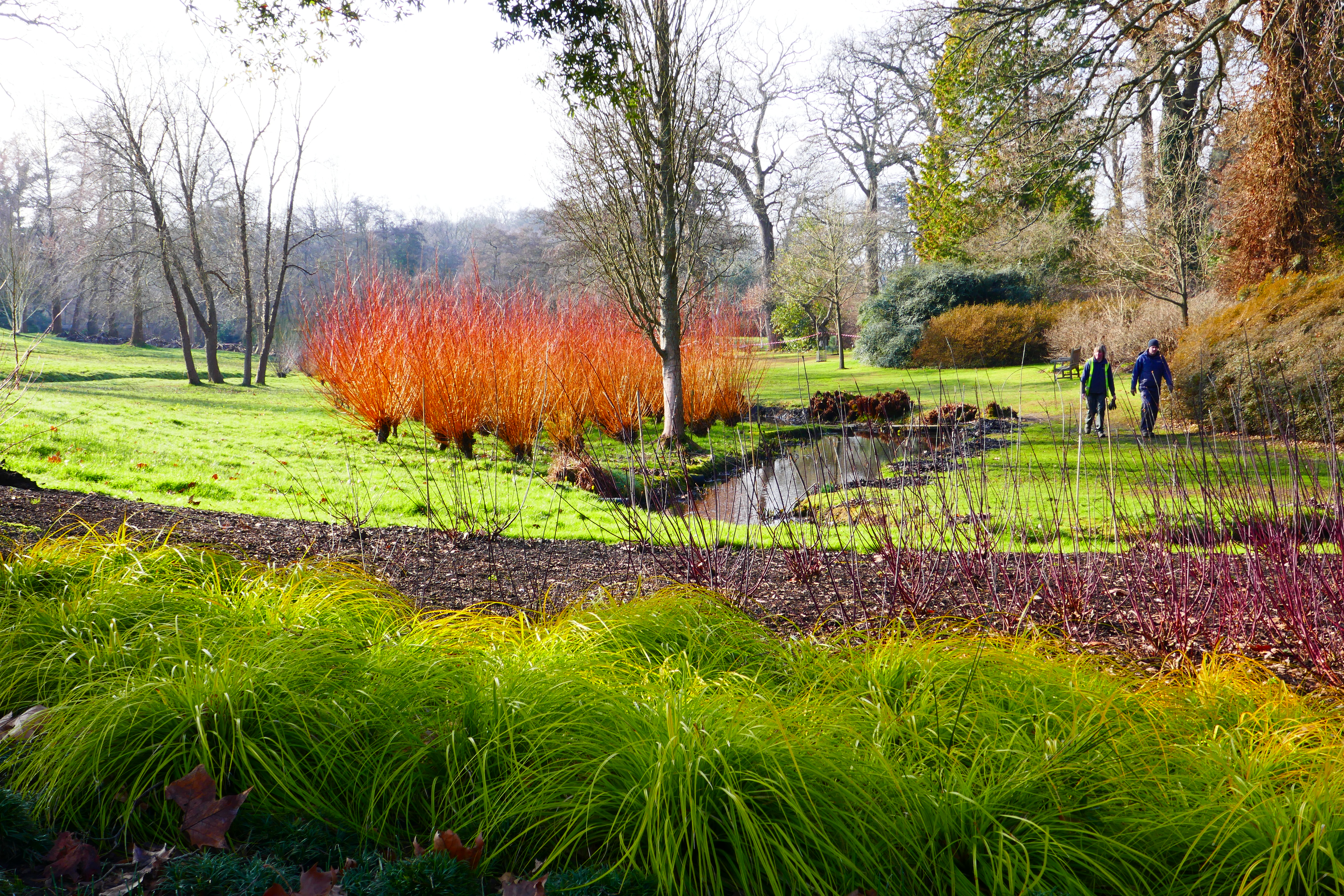
Wander through this winter garden and head up to your right and you find yourself in New Zealand. Here the plants are labelled with the Maori names as well as the latin (the labelling over the whole garden is very clear which is a huge bonus for plant enthusiasts though not always ideal when you’re taking photos). You might not expect much to see in this garden in winter, but it looked good. Drifts of grasses that included (and may have been entirely made up of) Chionochloa rubra (Red Tussock grass) were broken up by dark red clouds of Muehlenbeckia astonii and the familiar shapes of phormiums.

Keep heading in the same direction and you’ll come to the Queen Elizabeth Temperate House with its collection of tree ferns and a lovely water feature named Charybdis (which google tells me is a sea monster in Greek mythology that’s often represented as a whirlpool, as in this water feature). Outside the temperate house there are gravelled beds of Mediterranean plants, roses, an alpine garden and herbaceous borders. Naturally enough, there wasn’t much in flower here in February, but a huge, dormant Wisteria sinensis growing on a flat patch of ground looked like another sea monster from Greek mythology – the Kraken.




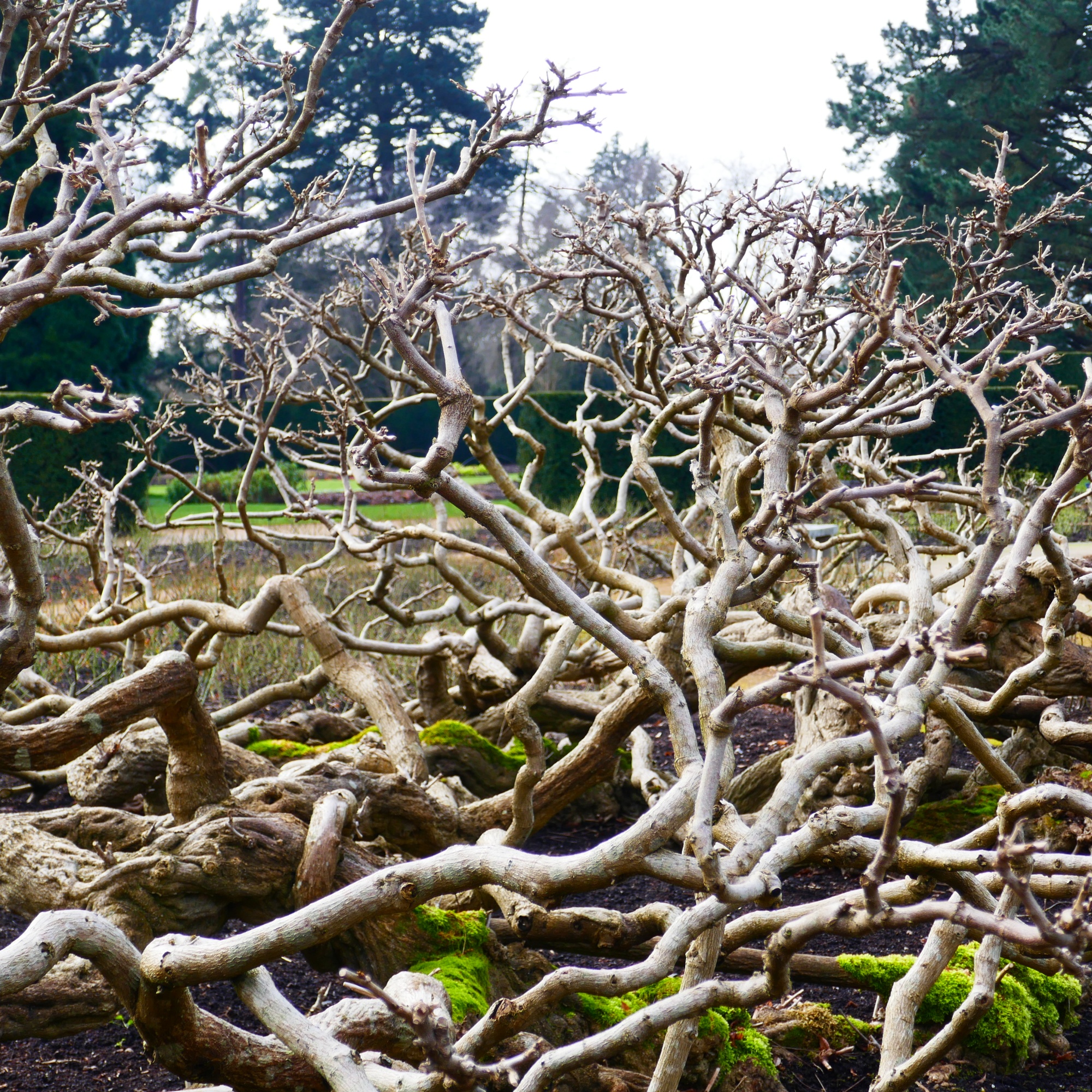
Spring Wood was already partly in bloom, with camellia and a few rhododendrons getting under way.




Unnamed Camellia, Camellia japonica ‘Ack Scent’ (top right) Camellia x williamsii ‘Donation’ (below), Rhododendron ‘Choremia Tower Court’ (bottom)
Summer Wood was a revelation with its huge drifts of hydrangea seed heads. All brown, of course, but a rich, warm, brown that was beautiful in the sun, especially with a clear blue sky behind. Hydrangea are becoming cool again after some years in the ‘dated’ wilderness, and this sea of seed heads which seemed to be made up of H. macrophylla and H. paniculata was spectacular, and super cool. I’ve read that birds often use hydrangea seed heads when they’re nest building so they’re both beautiful and useful, what more could you want?

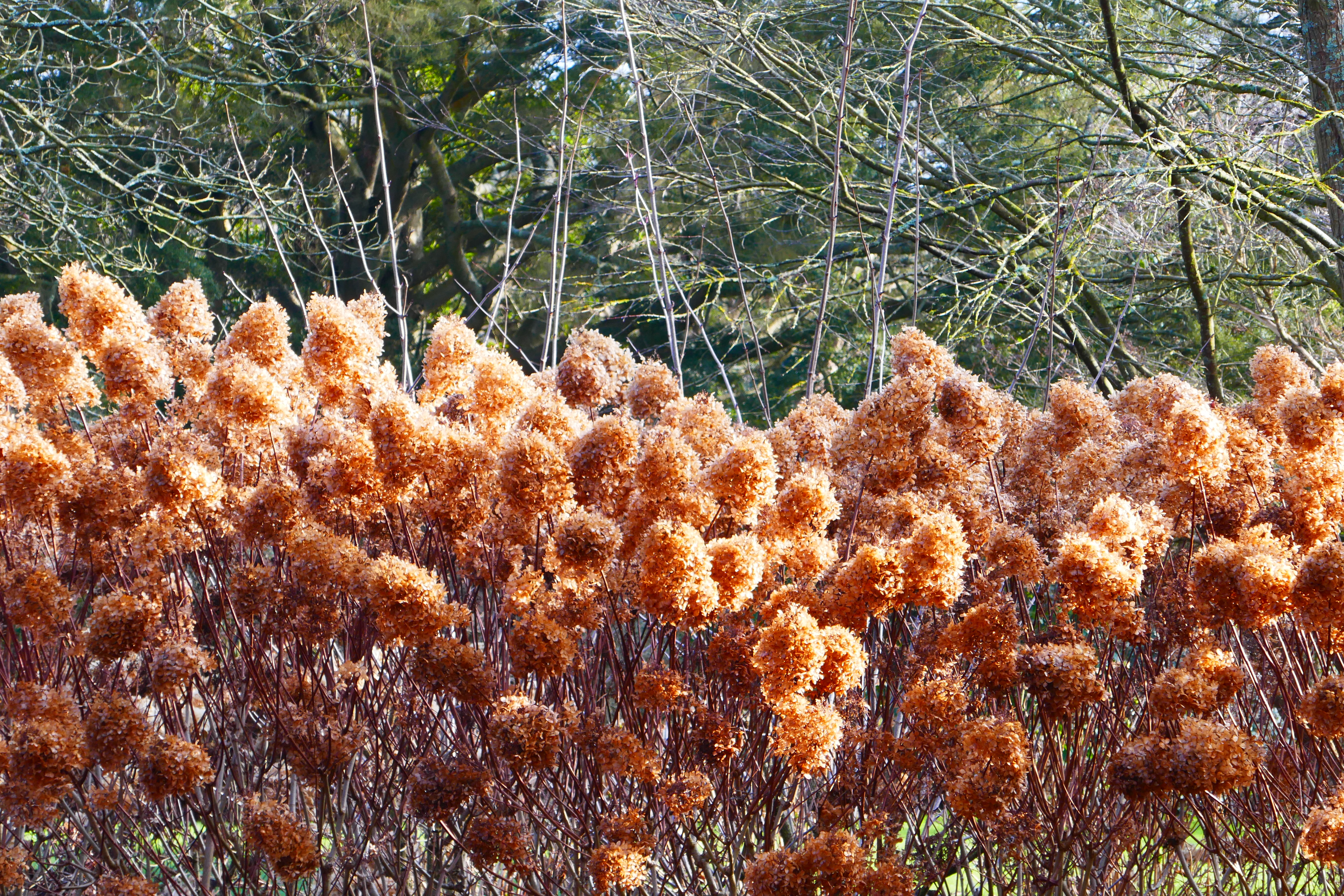

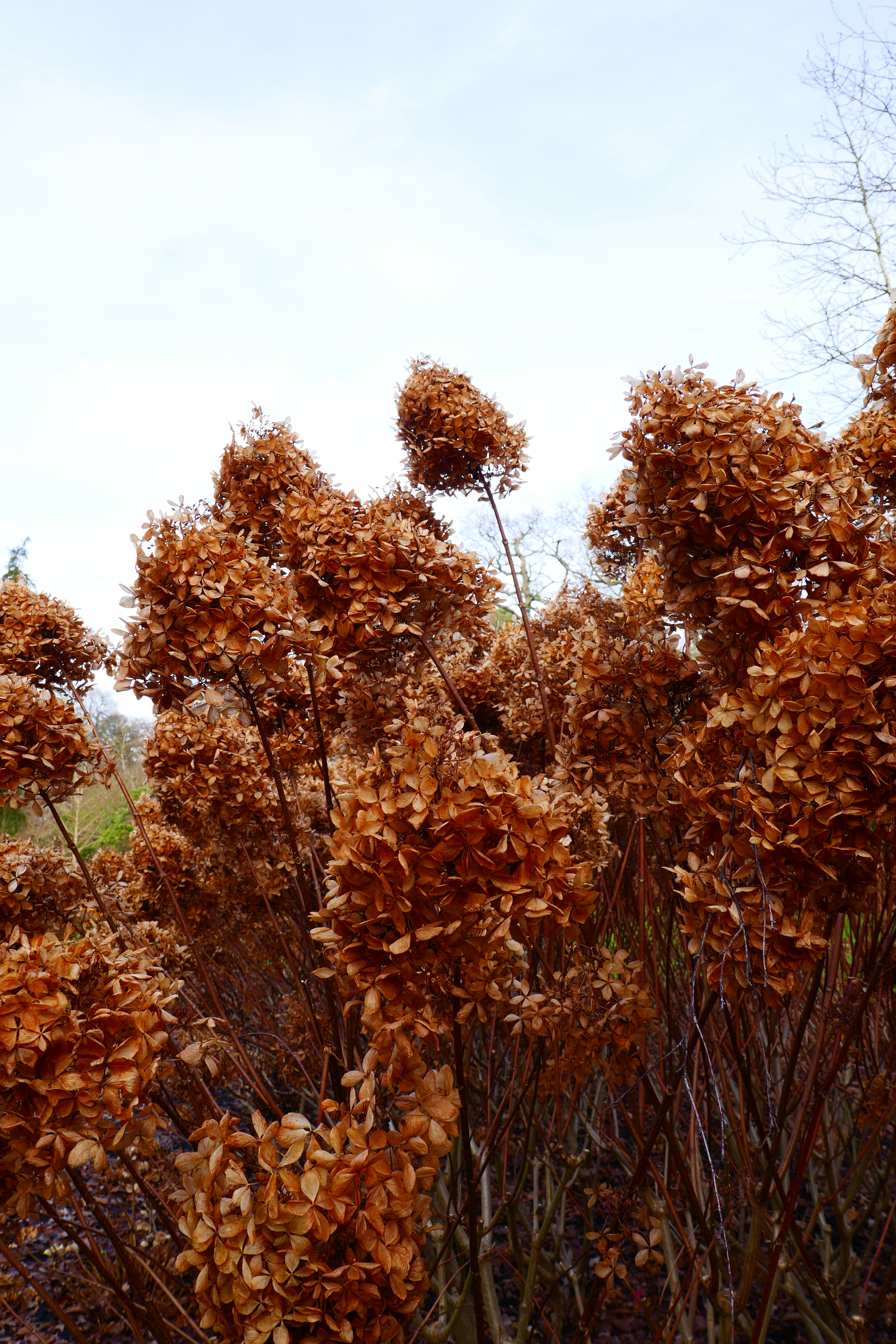
From there you can walk down through the Glades where you’ll find spring bulbs in a month or so, and later hostas, irises and primroses as well as damp-loving perennials like persicaria judging from some of the labels. There are sign posts here directing you The Hidden Garden, though I can’t tell you more about that because wasn’t sure I found it, and then on to the Autumn Wood, which didn’t have a huge amount to see in late winter but has acers for autumn colour and these might well look good in spring as well.
Bog plants are a feature throughout the whole garden, which seems to sit on a very damp site, and you come across plenty of gunnera protected by tents of leaves in February. Tiny cyclamineus daffodils, with their rigidly reflexed petals, are naturalised and seem to pop up in the grass everywhere – unless the purple crocuses have got there first.

Gunnera, their crowns protected by their own leaves 
Drifts of crocuses
There are also lots of opportunities to meet interesting trees.

Quercus pondaim 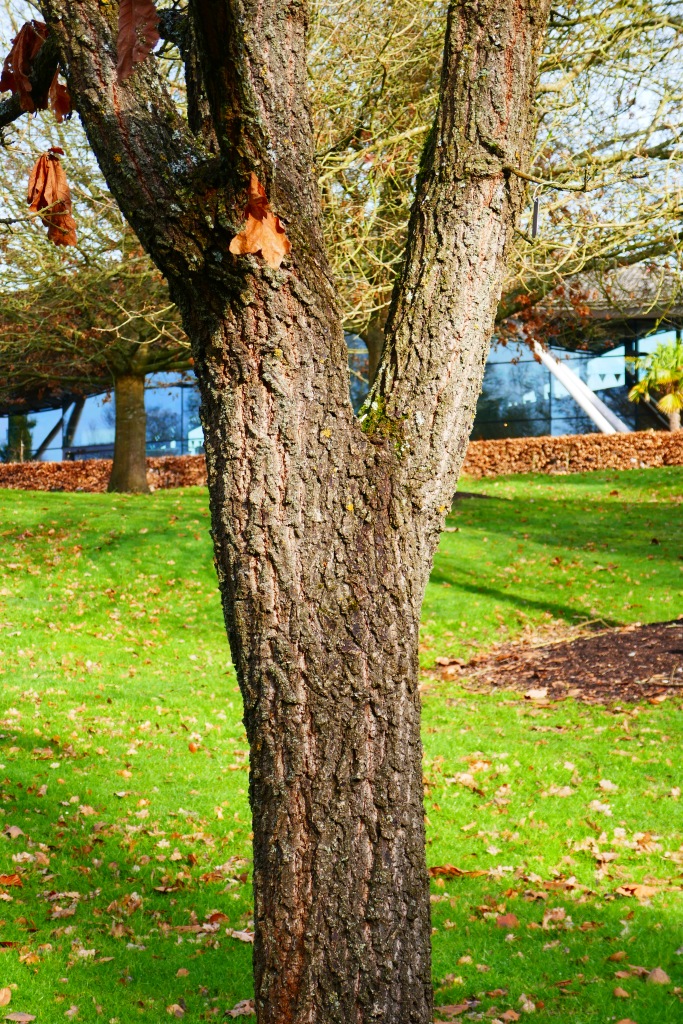
Quercus dentata 
Fagus sylvatica ‘Dawyck Gold’ 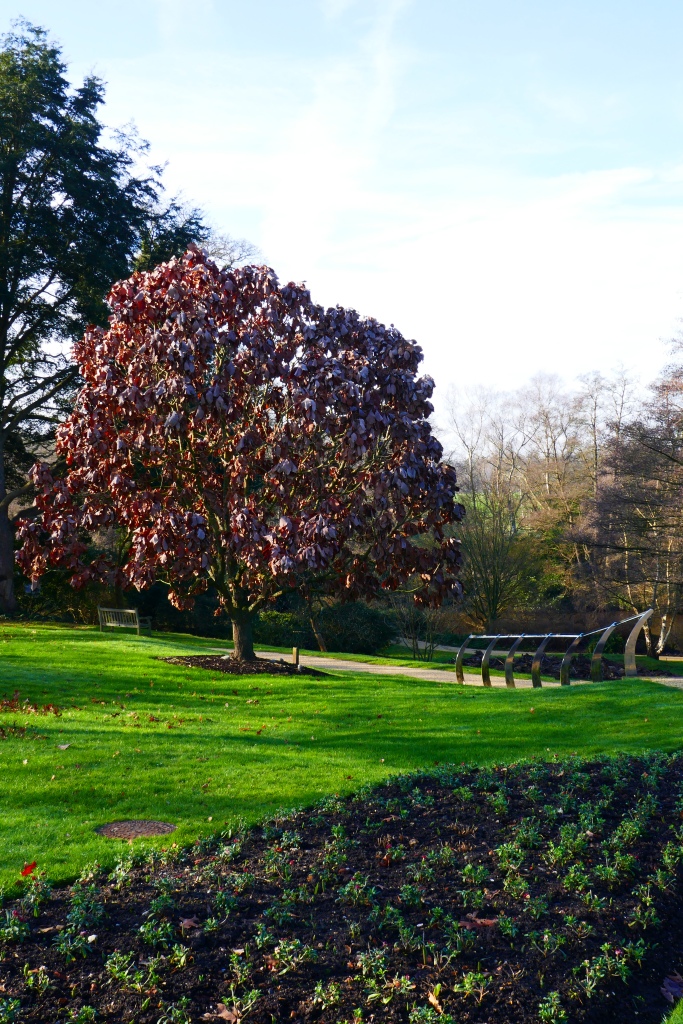
Quercus pondaim
It’s an extremely well-maintained garden; weed-free, neat, and tidy in a way that suggests not just good management but also enough staff (and probably volunteers) to get all the jobs done to keep it at its best. There was quite a lot of work going on when I visited and quite a few areas that were closed off because of soggy ground conditions or some of the work. The entrance fee is less in winter than in summer so that seems fair). Now I’ve seen it, I hope to come back for another visit in the summer.
Categories: Visits with interesting plants
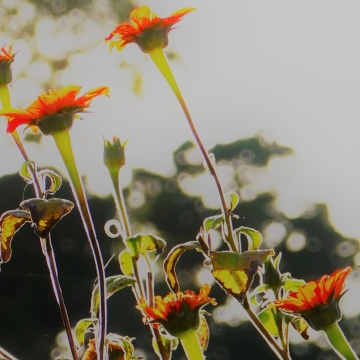

Great tour, thanks. Those dogwoods are glorious and I don’t think I’ve seen Bergenias look so good before either.
LikeLike
Thanks, glad you enjoyed reading it. I think Bergenias are having a good year.
LikeLike